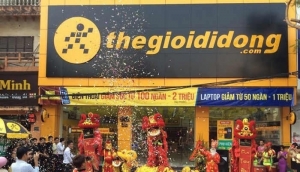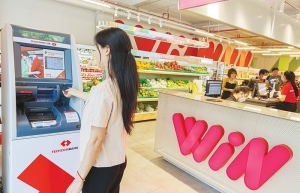Trends and opportunities for brands and retailers
What are some of the most significant changes in Vietnamese consumer behaviour that you have observed over the years, particularly in light of the pandemic?
 |
| Helen Sac, consultant director for Asia-Pacific at consumer insights firm WGSN |
The most significant changes in Vietnamese consumer behaviour would be the growing digital-first lifestyles that will sustain the country’s $22 billion e-commerce boom. New retail investments will increase consumers’ expectations around flexible and convenient omnichannel experiences, and brands will look to strengthen their omnichannel presence to cater to changing preferences.
WGSN’s recent report highlighted that Vietnam is the most confident country in Asia in its economic future. How does this translate into opportunities for brands and retailers in the country?
A post-pandemic manufacturing boom, rising digital economy and the return of tourism has driven wage growth, optimism and retail recovery in Vietnam, driving optimism and confidence in the country’s economic future. A total of 75 per cent of Vietnamese consumers are also planning to splurge in 2023, driven by younger or high-income consumers.
This is also a common trend that we are seeing among consumers in Asia, as consumers in Asia-Pacific are driving a physical comeback in stores. Brands and retailers operating in Vietnam will need to offer powerful counterpoints, such as sensory, curated and engaging in-person experiences, to counter digital fatigue.
What are the underlying factors driving the strong preference for domestically produced goods? How do businesses make the most of this trend?
Younger consumers here are gaining confidence in locally branded products, and have demonstrated a strong preference for Vietnamese-made goods over foreign brands. These consumers are now displaying cultural confidence and a growing trust in quality that will create new hyperlocal collaborative opportunities for brands.
As consumers rally around a home-grown creative class that reflects their immediate values and priorities, brands and retailers should also look into initiatives that celebrate the local communities, partner with local creatives, or lean into local aesthetics, traditions and flavours.
Given the significant presence of younger generations in Vietnam, how do you expect their digital-first lifestyles and preference for convenience to shape the retail landscape?
With Vietnam’s $22 billion e-commerce boom, younger consumers will expect flexibility and convenient omnichannel experiences. A recent report also highlights that over 90 per cent of consumers, especially younger buyers with higher incomes, are looking to new methods.
Retailers will need to be able to bridge online and offline experiences seamlessly to retain consumers in 2023, such as investing in an online presence on marketplaces such as Tiki and Shopee. In addition, as consumers are gradually embracing the ease and convenience of digital payments, brands will also need to begin integrating alternative and digital payments across channels to reduce friction and drive conversions.
As consumers plan to increase savings amid an economic slowdown, how can brands incentivise spending? Are there any specific approaches or marketing tactics that have proven successful?
Retail spending for consumers in 2023 will be characterised by the desire to splurge, and the intention to increase savings amid an economic slowdown. Rising inflation and high-interest rates will also continue to drive cost-of-living concerns, and consumers will lean heavily into personal passion and novel in-person experiences.
Household spending in Vietnam will grow at 7.3 per cent on-year, but emerging middle classes will look to balance price and quality and seek for the best value-for-money in their purchases. It is important for brands to increase their perceived value and reward consumers through membership programmes and loyalty partnerships.
For instance, Starbucks integrated its rewards initiative with Grab in 2022, allowing consumers to enjoy last-mile delivery while earning Starbucks Rewards benefits on purchases through Grab.
Hyperlocalism will continue to drive consumer behaviour as Vietnamese shoppers gain confidence in home-grown labels and products. Complemented with a history of trust-based, word-of-mouth, recommendation-driven shopping culture that has led to the rise of social commerce here, brands should explore lo-fi strategies that rely on do-it-yourself user-generated content to reach out to Vietnamese consumers in the next 2-3 years.
 | Retailers flexibly steering through turbulent times Big retailers are adopting flexible measures to confront the challenging environment and consumers’ strict budgets. |
 | Retailers enter the AI game to improve customer services After fintech and technology, the retail sector is seemingly joining the race to utilise AI race after a number of businesses announced plans to develop and integrate this technology into their operating models. |
What the stars mean:
★ Poor ★ ★ Promising ★★★ Good ★★★★ Very good ★★★★★ Exceptional
Related Contents
Latest News
More News
- Main drivers for Vietnam’s digital economy future (December 03, 2025 | 11:35)
- Pivotal stage of growth paves way for rise in M&As (December 03, 2025 | 10:00)
- Positive projections for M&A interest from Thailand (December 03, 2025 | 09:40)
- Manifesting the first line of defence in cybersecurity (December 03, 2025 | 09:00)
- The transformational role AI can play in accounting arena (December 03, 2025 | 08:00)
- Unlocking 5G-AI potential in Singapore (December 03, 2025 | 08:00)
- Data-driven strategies vital for a fast-evolving nation (December 02, 2025 | 09:41)
- Policy to practice: how Vietnam can lead the region (November 26, 2025 | 16:03)
- Mobilising private capital at scale vital for climate battle (November 26, 2025 | 15:36)
- VILAF and Yoon & Yang launch Vietnam - Korea Practice Unit (November 26, 2025 | 15:16)

 Tag:
Tag:




















 Mobile Version
Mobile Version